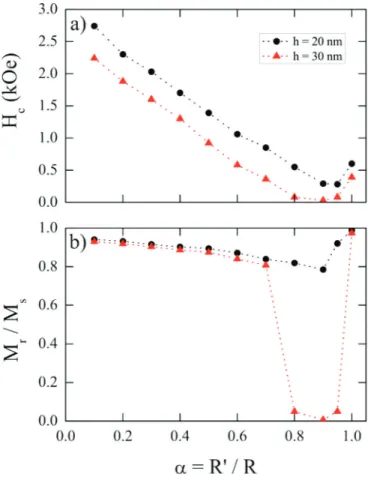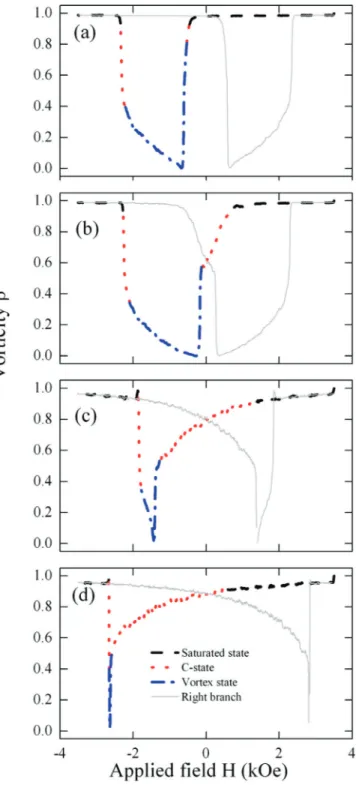Asymmetric magnetic dots: A way to control magnetic properties
Texto completo
Figure



Documento similar
Cytocompatibility of biomimetic magnetic nanoparticles mediated by magnetosome proteins (BMNPs) on 4T1 (A,C) and MCF-7 (B,D) cells in the absence/presence of a gradient magnetic
In this part, we will concentrate on the magnetic properties of a single ferromagnetic particle, that is to say, we will study a magnetic nanoparticle without taking into account
Figure 6(a) shows the emission spectra generated by the powdered OMHSs in the absence of any applied magnetic field and tissue as obtained for two different 808 nm laser powers..
The magnetic configuration and magnetization reversal process of cylindrical shaped magnets (nanowires and nanodots) have been studied using Magnetic Force
In addition we will to present our result of the effect in the magnetoresist- ance of an organic molecule such as the Manganese Phthalocyanine (MnPc), a high magnetic spin
The axial magnetic effect describes the generation of an energy current parallel to an axial magnetic field B 5 (i.e., a magnetic field coupling with opposite signs to the left
In such cases, two different methods to distinguish clearly the origin of the forces can be proposed: (i) By applying in situ a magnetic field during the MFM operation [14-16];
The metamagnetic transition shown in Fig.[5.9(a)] can be related to the exper- imental metamgnetic transition [94, 95] in the following way: for zero magnetic field H = 0 and for